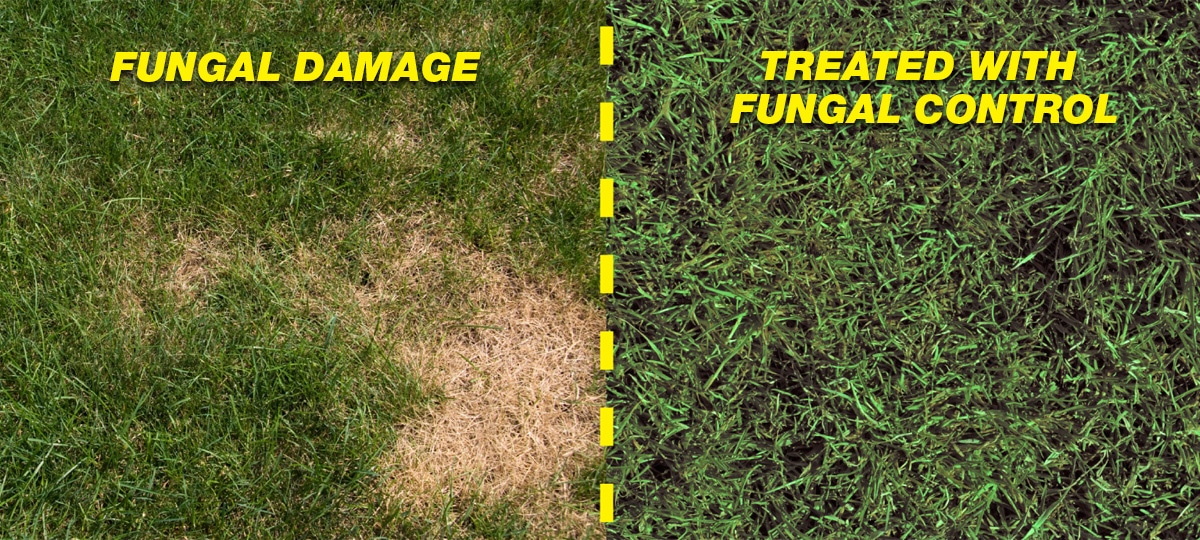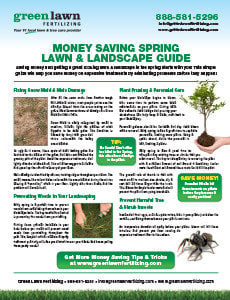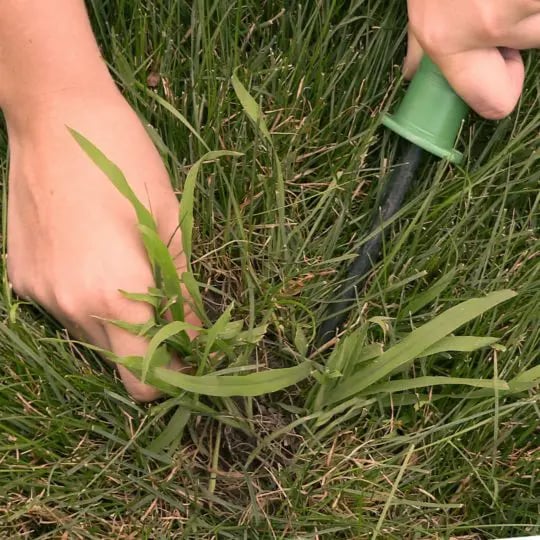Fungicide Program
NJ, PA & DE Fungus Control
Lawn fungus control is one of the most underrated and underused lawn disease treatments. Ever wonder how golf courses look immaculately green without the interruption of fungi and other common lawn diseases. Want to know the truth behind having the best green lawn on the block? Do you have what it takes to elevate your lawn above the rest of the competition on block?
Some of the most destructive, pulverizing lawn diseases can be controlled by a strong Fungicide program. The Green Lawn Fertilizing Fungicide Program will help prevent and control destructive lawn diseases such as: Dollar spot, Leaf Spot, Red Thread, Brown Patch and Summer Patch.

How to Identify Fungus in Your Lawn
We can experience a number of lawn diseases in the tri-state area (Pennsylvania, New Jersey and Delaware) and before you decide you need fungus treatment, it’s important to know how to recognize fungus in your lawn.
🔍 How to find Leaf Spot
Leaf spot, otherwise known as “melting-out diseases” are provoked by a special group of fungi. This group is referred to as Helminthosporium. Every season, our grass species are prone to a leaf spotting or “melting-out” effect. You can start to see this attack when your grass starts to become burnt out or consumed by burned brown spots. During the summer months, leaf spotting can attack nearly every turf species—tall fescue and ryegrass are especially prone to this attack. However, it’s advised to keep a close watch late spring through the summer months for the extreme damage and activity.
🔍 How to find Dollar Spot
Many lawn care diseases, once appearing only on golf courses, are now appearing commonly on our lawns. On our home turf, cut at 1 to 3 inches, with light tan or white dead areas reaching 2 to 4 inches in distance are good indicators of having dollar spot. These spots can ultimately produce large areas of dead turf. The most severe cases of dollar spot may occur during the muggy summer months on turf receiving a closely-spaced water source. This may also occur if your turf doesn’t have a proper irrigation source as the humidity can overtake your turf. Dollar spot is most direct when under a nitrogen deficiency or when your grass grows too slow.
🔍 How to find Red Thread
This common lawn fungus is prevalent amongst perennial ryegrass and fine fescue. These are the two most susceptible species of turf to this disease. There is a good chance you may notice these unsightly red/pinkish blotches on your turf as you went to get the mail, or as you may walk up to our door when you arrive home from work. Other contributing factors to the cause of red thread are insufficient nitrogen levels, and poor drainage of the turf. The more moisture on your lawn, the higher the probability of red thread occurring on your property is, or any disease for that matter.
When Does Your Lawn Need Fungus Control?
If you’ve identified fungus in your yard then you likely need a fungicide program to treat your lawn. With the combination of high summer temperatures, high humidity levels and inconsistent rainfall, it’s common to have to treat lawn care disease in the summer months. Fescue and Ryegrass are especially exposed to developing Red Thread, Leaf Spot and Dollar Spot during the summer months. Factors that can increase the likelihood of developing this harmful lawn disease, and subsequently needing treatment, are mowing at the wrong height, poor turf drainage and improper watering. Each of these indicate it’s time get your fungus under control.
Green Lawn Fertilizing offers a preventative AND post application Fungicide Program to handle your lawn’s fungicide needs to help aid in lawn fungus control. And if you’re part of our lawn fertilizing program we look to provide you with the most personalized information pertaining to your lawn possible during each visit to your property. If any of our technicians notice this fungus activity on your lawn, we will be sure to make your aware of its presence, and any actions that need to be taken to resolve this issue, or any others.

Lawn Disease Guide
Learn the hallmark characteristics of diseases that are common to mid-Atlantic turfs.

Spring Lawn and Landscaping Guide
Plan carefully in the spring, and save money all year long on care for your prized lawn and landscape.


